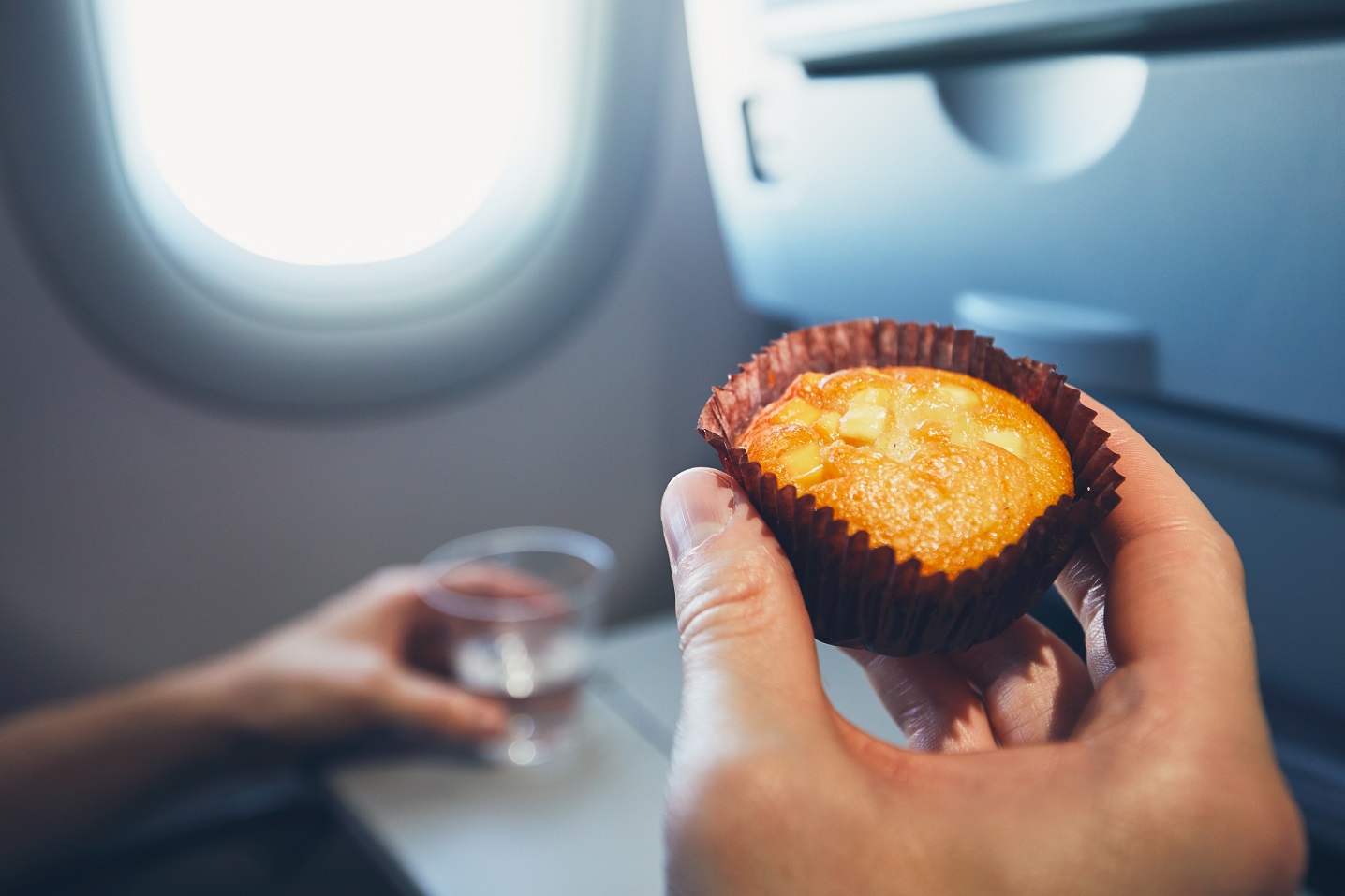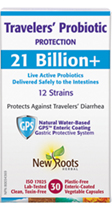Travelling Safely with Food Allergies and Sensitivities

School is out and summer is in! This is the time of lazy days, family fun, and of course—travel.
Whether you love to camp, visit family, go on road trips, or perhaps even fly or cruise to new lands around the world, if you are like me or have any loved ones who live with food allergies, celiac disease, or any other food sensitivity, you know that these simple pleasures are anything but simple.
Sadly, many who live with dietary restrictions feel tremendous loss of the freedom to travel “like a normal person,” and often feel their days of adventure are over because of the lack of safe food options available for them, that they can feel confident do not contain ingredients that would put their health at serious risk.
I know first-hand this limiting fear, but I have been able to find how it can be surmountable with proper preparation and information.
Sharing What I’ve Learned
Between the tips and tricks that I have personally learned and have heard from others whose lives have also been touched by food sensitivities, I’d like to give you some useful information and resources that will make it safer and easier for you to enjoy galivanting around the world, even if you live with food allergies, celiac disease, or other dietary restrictions.
Don’t Be Shy! Communication Is Crucial
Let People Know What You Need: No one can or will accommodate you if they don’t know that you have special dietary needs. Most people want to help you and don’t want you to be sick, though they will need to fully understand what to do to ensure your safety.
Be Patient and Clear: Be patient with those you seek help from. While more people are becoming aware of food allergies and other dietary challenges, most don’t understand the critical nuances and degree of risks associated with cross-contamination. They also often are not aware of the hidden sources of triggering foods, especially those found in many condiments, teas, and as additives.
Give Lots of Lead Time: When you request accommodations—whether from restaurants, the airline, hotels, friend, or family who are hosting you—be sure to give them ample time to prepare for your use of their services.
Print Out Chef Cards: FARE’s Chef Cards (https://www.foodallergy.org/life-food-allergies/managing-lifes-milestones/dining-out/food-allergy-chef-cards) are now available in over 10 languages, making it easier to communicate with your hosts, at restaurants, with the airlines, etc. about your dietary restrictions. Print out extra copies, so that you can give them freely to those who serve you.
Air Travel
Before heading to the airport, eat a satisfying meal and bring food to eat in the airport, and bringing food that will be allowed on the plane.
 Bring your own food to eat while on the plane, ensuring you bring extra in case of any long delays, layovers, or accident. Nonperishable travel snacks and meals can be easy food options. I didn’t realize until after my trip to China that you are allowed to bring with you on the flight most prepared food items (even homemade foods) through security that you might like to enjoy on the flight, as long as they don’t contain more than 100 ml (3.4 oz.) of liquids. Some examples would be hummus, sandwiches, salad, nuts, cut-up fruits and vegetables, pizza, etc., even though you still need to claim them and may be required to go through more screening.
Bring your own food to eat while on the plane, ensuring you bring extra in case of any long delays, layovers, or accident. Nonperishable travel snacks and meals can be easy food options. I didn’t realize until after my trip to China that you are allowed to bring with you on the flight most prepared food items (even homemade foods) through security that you might like to enjoy on the flight, as long as they don’t contain more than 100 ml (3.4 oz.) of liquids. Some examples would be hummus, sandwiches, salad, nuts, cut-up fruits and vegetables, pizza, etc., even though you still need to claim them and may be required to go through more screening.
Be courteous with the crew, and help them understand the nature of your special travel needs, expressing appreciation for their efforts to accommodate.
Food Tips and Considerations—Wherever You Travel
Make Your Own Food
Plan and pack safe snacks and meals for your trip, so that you can have quick and easy meals wherever you are.
Collapsible bowls, utensils, and other kitchen supplies can be wonderful space-saving and easy-to-pack options to travel with.
Plan to pack an extra checked bag of food for your trip—at least enough to get you through the first bit of your trip, until you have an opportunity to go to the local produce stands and grocery stores in the area where you will be travelling.
Plan a trip to the grocery store right after arriving at your destination, where you can pick up fresh fruits and veggies to enjoy while travelling.
Know that, wherever you travel, it’s unlikely to find the same nonperishable food options as you are accustomed to having where you live. It may be harder for you to find safe food for you and your family to eat. Even the same manufacturers often use different ingredients when they produce food in different countries. Be sure to read the labels, even if you think they are the same as those of food items you buy back home. Typically, fresh produce is readily accessible.
Even when you read the food labels, know that food-labelling laws vary from country to country. When travelling, it becomes even more important to buy as much local, whole organic food as possible.
Dining Out
When living with food allergies and sensitivities, finding places to dine out is challenging, even in the best of times. When travelling, especially in places where you don’t speak the language, it is especially risky. However, if you do your research and take appropriate precautions, you may be able to find safe dining alternatives.
Research online about known allergy-friendly establishments and chain restaurants that have menus and policies for creating allergy-friendly menu items that are free from cross-contamination.
Contact potential restaurants and inquire about their food-handling practices around special dietary requests, including the use of special utensils, prep boards, cleaning methods, etc., letting them know the nature of your food sensitivities.
Upon arrival, ask that they give your Chef Card to the Chef. In my experience, chefs actually enjoy the opportunity to talk about the dietary restrictions with patrons, and they can get excited about the opportunity and the challenge of creating something special for you.
Avoid buffets, salad bars, desserts, and fryer-fried foods, because the risk of exposure to common allergens and cross-contamination is so high.
If you get an uneasy feeling and don’t feel confident that proper precautions will be taken, or if you sense that the establishment doesn’t fully understand the seriousness of your dietary restriction, you are wise to listen to the wisdom of your intuition and find somewhere else to eat or get ingredients to make food yourself. Trust your gut!
Always have backup “safe” food with you in case there is no food that is available for you to eat with confidence.
Be sure to express gratitude for thoughtful accommodation to those establishments that demonstrate care and concern for your dietary needs.
It’s All Worth It
No one ever said that travelling with food sensitivities is convenient or offers a light way to travel: It does require a mental shift and an increased sense of diligence. However, if you can mentally prepare yourself for the trip so that you can enjoy the freedom of being able to travel, even with food restrictions, it will all be worth it. Once you can move beyond the overwhelming feelings about the safety considerations, I hope you can feel confident about travelling again, especially if you had previously given up hope.
 Theresa Nicassio, PhD, Psychologist
Theresa Nicassio, PhD, Psychologist
Theresa is a kindness advocate, chef, wellness educator,
and the award-winning author of YUM: Plant-Based
Recipes for a Gluten-Free Diet.

 Stores
Stores

